Delve into the rich history and culture of northern Thailand with our guide to the best Chiang Rai Museums and historical sites to visit.
Enveloped in a mist of history and culture, Chiang Rai’s story is as compelling as it is deep, housing relics that span back to the 13th century. A staggering 90% of visitors to this northern gem explore Chiang Rai’s museums and historical attractions, seeking to unearth the layers of Lanna legacy and the patchwork of its indigenous influences. For travelers and culture enthusiasts, this means an unmissable opportunity to delve into an era where ancient meets contemporary, and history is entwined with vibrant cultural expression.
With a Chiang Rai travel guide in hand, adventurers can transcend time within the city’s ancient walls, where the whispers of the past reverberate through the air. From the remnants of the region’s first capital to its present-day status as a hub of cultural mosaic, Chiang Rai museums offer a glimpse into a civilizational crossroads. The province’s sightseeing experiences invite globetrotters to visit museums in Chiang Rai, engage with the local hill tribe communities, and reflect upon the profound stories etched within the area’s diverse landscape.
Whether you are eager to explore Chiang Rai’s museums, dive into the heart of Chiang Rai culture and heritage, or simply list the myriad things to do in Chiang Rai, this northern Thai city stands ready to wield its charms. It is an authentic enticement, a historically full platter for those with a voracious appetite for Chiang Rai sightseeing and an immersive engagement with one of Thailand’s profound Chiang Rai tourist attractions.
Key Takeaways
- Chiang Rai offers a deep dive into the history of the Lanna Kingdom and is a treasure trove of cultural exploration.
- The city’s historical attractions provide insight into the vibrant mosaic of hill tribe communities.
- Visiting museums in Chiang Rai is a top activity among tourists, with a significant majority including it in their travel itinerary.
- Chiang Rai culture and heritage are reflected not just in its historical sites but also in the contemporary art and natural beauty that adorn the region.
- An increasing number of travelers are eager to explore Chiang Rai’s museums, signaling the importance of cultural tourism in the area.
Exploring Chiang Rai’s Rich Cultural Tapestry
In the heart of Northern Thailand, Chiang Rai’s cultural landscape offers a vibrant patchwork of history and heritage. As we dive into the depths of this region’s past, we uncover the echoes of the Lanna Kingdom, the living traditions of hill tribe communities, and the serene beauty of natural attractions. Join us on a journey to explore Chiang Rai’s rich cultural tapestry, which weaves together the threads of history, culture, and nature into a compelling narrative.
The Lanna Kingdom Legacy: Tracing Chiang Rai’s Origins
The storied roots of Chiang Rai stretch back to its days as the flourishing capital of the **Lanna Kingdom**. Visitors to the region can glimpse the vestiges of its historic defense structures that stand testament to the kingdom’s former glory. The Lanna Kingdom history is not just inscribed in the stone of ancient temples but is also palpable in the enduring customs and practices that define Chiang Rai’s identity today.
Hill Tribes and Indigenous Culture: A Living History
The intricate social fabric of Chiang Rai is richly colored by the diverse hill tribe communities such as the Akha, Lisu, Karen, and Hmong. Each community contributes a unique strand to the province’s cultural weave, with their own languages, traditions, and arts. A visit to these communities offers a rare opportunity to witness a living history that shapes the cultural identity of Chiang Rai and remains integral to the cultural attractions Chiang Rai is proudly known for.
Chiang Rai’s Natural Wonders: A Historical Perspective
Natural attractions in Chiang Rai go beyond scenic vistas. Place like the Mae Fah Luang Garden and Huay Pla Kang Temple are not only sites of aesthetic charm but also a canvas for cultural storytelling. Through appreciating these natural wonders, one gains insight into the historical narrative of Chiang Rai and its people, an experience enhanced by the guidance found in a well-composed Chiang Rai museum guide.
Chiang Rai Museums: A Gateway to the Past
Delving into the rich tapestry of Chiang Rai’s history is incomplete without a visit to its renowned museums, artistically highlighting the city’s evolution from its cultural roots to modern shifts. As visitors explore these treasure troves of heritage, they embark on a journey through time, captivated by the narratives each museum preserves.
Among the bragging rights of Chiang Rai Museums, the convergence of traditional and contemporary influences is showcased, reflecting the cultural dynamism of Northern Thailand. While famous attractions like the White Temple leave tourists spellbound, there’s an entire realm of artistic splendor awaiting those keen on savoring Chiang Rai’s artistic charm.
Beyond the White Temple: The Artistic Haven of Chalermchai Kositpipat
The White Temple, an iconic structure conjured from the imagination of Chalermchai Kositpipat, embodies the intersection of spiritual and avant-garde artistry. This must-visit museum in Chiang Rai not only exemplifies Kositpipat’s innovative blend of ideologies but also stands as an intriguing entry point into the artist’s broader work, transporting onlookers to an ethereal world of reflection and creativity.
Baan Dam: The Eccentric World of Thawan Duchanee
Another gem amongst Chiang Rai art museums is Baan Dam, also known as the Black House. Birthed from the vision of artist Thawan Duchanee, this complex serves as a testament to a life dedicated to exploring the human condition. An idiosyncratic constellation of traditional northern architecture melded with contemporary art makes Baan Dam a center for deciphering themes intertwined with Thai culture and spirituality.
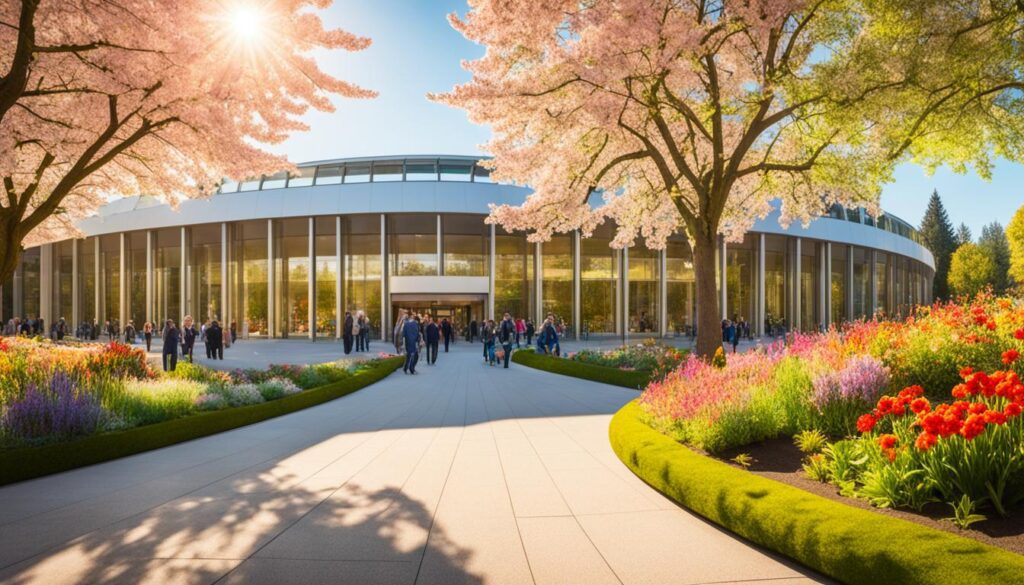
The Hall of Opium Museum: Narratives of Transformation
For those seeking an insightful retrospective of the area’s notorious legacy, the historical museums Chiang Rai offers, like The Hall of Opium Museum, are indispensable. Exemplifying the transformative history of the Golden Triangle, it documents the profound shift from a land marred by illicit trade to one of resilience and hope, cementing its place among top museums in Chiang Rai.
These centers of cultural and historical documentation pay homage to a region steeped in complexity and beauty, ensuring that the story of Chiang Rai continues to captivate and educate locals and international visitors alike.
Delving into the Golden Triangle’s Intriguing History
The Golden Triangle, a region steeped in a bittersweet narrative, stands as a testament to the complex history of Chiang Rai. Known for its role in the historical opium trade, today it presents a new chapter highlighted by cultural attractions in Chiang Rai. Visitors eager to visit museums in Chiang Rai will find the Hall of Opium not merely as an exhibit of the past but as an enlightening journey through the socioeconomic shift the area has undergone.
Within the Hall of Opium’s walls, tales of redemption and transformation unravel, offering a deep dive into the Golden Triangle history. Those embarking on Chiang Rai museum tours are frequently captivated by the compelling storytelling methods that juxtapose the Golden Triangle’s ominous legacy with its current state of tranquil allure, where the borders of three nations gracefully converge.
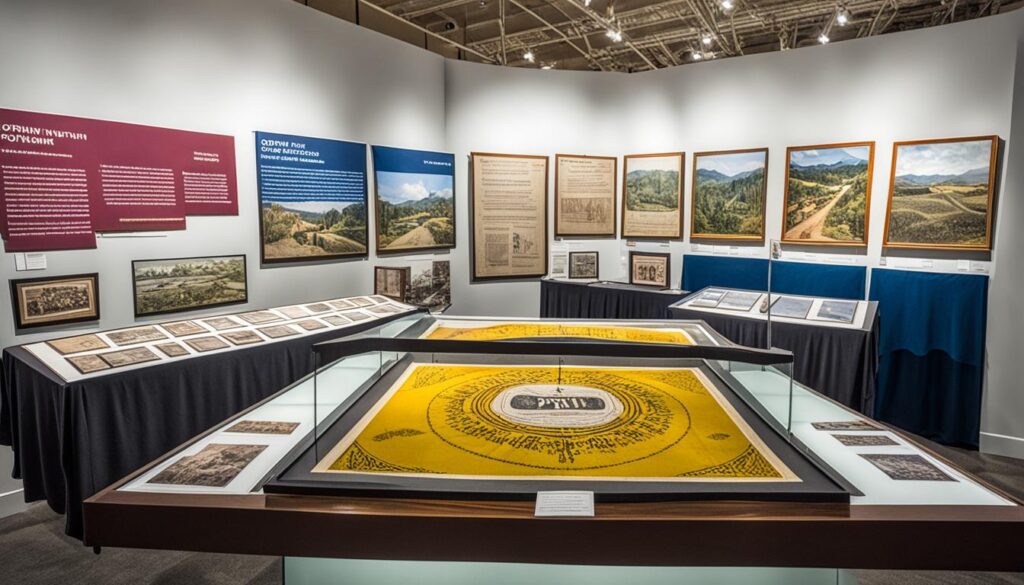
A key highlight for tourists engaging in Chiang Rai sightseeing is the tangible sense of time travel, providing a lucid glimpse into how the region has reshaped its identity. While the somber echoes of the past resonate throughout the exhibits, the verdant landscapes and the enduring spirit of local communities are what truly define the cultural attractions of Chiang Rai today.
“The Golden Triangle teaches us that the darkest histories can lead to the most enlightening futures. It’s a place where education, beauty, and cultural fusion create a tapestry rich with history and hope,” noted a Chiang Rai museum curator.
Encountering the Golden Triangle’s narrative is an essential aspect of the Chiang Rai experience, lending visitors a comprehensive understanding of not only where this region has been, but more inspiringly, where it is headed.
The Tribal Villages of Chiang Rai: Understanding the Local Heritage
At the heart of Chiang Rai’s diverse culture are the tribal villages Chiang Rai, each a unique palette of customs, language, and dress that add to the intricate mosaic of the region. When venturing into the outskirts, travelers are greeted by this living heritage where the vibrant threads of local history are woven into daily life. Despite the inevitable touch of modernity, these communities, such as the renowned Long Neck Karen Village, serve as vibrant repositories of the province’s cultural heritage Chiang Rai. They stand as a testament to the resilience and continued relevance of the hill tribes in shaping the social and cultural landscape of Northern Thailand.
As visitors explore these enclaves, they are offered an extraordinary chance to not just witness but also to engage with the rich tapestry of the Chiang Rai hill tribes. Each village unfolds a chapter of the local history, revealing age-old traditions that have persisted through time, offering an intimate glance at their way of life. This immersion provides tourists with a key to understanding the broader narrative of Chiang Rai’s history and its people, enriching their overall visit to this enchanting province.
For anyone keen to delve into the origins and evolution of regional heritage, a Chiang Rai travel guide to these tribal villages is indispensable. Whether it is through shared stories, handcrafted items that depict the tribes’ artisanal skills, or the serene ambiance of undisturbed natural beauty that cradles these communities, the local heritage comes to life, inviting travelers on an unforgettable journey into the heart of Chiang Rai’s cultural identity.
FAQ
What are some must-visit historical attractions in Chiang Rai?
Chiang Rai is home to many historical attractions including the ancient remains of the city’s walls and moats, the White Temple (Wat Rong Khun) by Chalermchai Kositpipat, and the Baan Dam (Black House) Museum. Don’t miss the opportunity to visit traditional tribal villages which offer a glimpse into the region’s history and cultural diversity.
Can you recommend a comprehensive Chiang Rai travel guide to museums?
For those interested in exploring Chiang Rai’s museums, most travel guides recommend starting with must-visit museums like the Oub Kham Museum, which showcases the heritage of the Lanna Kingdom, the Baan Dam Museum for contemporary art insight, and the Hall of Opium Museum to understand the region’s history with the opium trade.
What are the best things to do in Chiang Rai?
Aside from visiting the top museums in Chiang Rai, tourists can explore hill tribe communities; admire the natural beauty at attractions like Mae Fah Luang Garden and Huay Pla Kang Temple; and learn about regional history at the Golden Triangle, where Thailand, Laos, and Myanmar converge.
How does the culture and heritage of the hill tribes influence Chiang Rai?
The hill tribes of Chiang Rai, including Akha, Lisu, Karen, and Hmong peoples, contribute significantly to the region’s cultural mosaic. Their unique customs, languages, and traditions are an essential part of the local heritage, providing vibrant and living history lessons for visitors.
Where can I find the best Chiang Rai sightseeing and museum tours?
Chiang Rai offers various museum tours that cater to different interests. Travel agencies and local tourist information centers can provide details on guided tours focusing on the city’s art, culture, and history, including visits to prominent museums and historical sites.
How does the White Temple reflect Chiang Rai’s heritage?
The White Temple is a contemporary masterpiece that melds traditional Thai Buddhist art forms with modern design and philosophy. It’s both a homage to Chiang Rai’s artistic heritage and a unique interpretation by artist Chalermchai Kositpipat, symbolizing a bridge between the old and the new.
What is the significance of the Golden Triangle in Chiang Rai’s history?
The Golden Triangle was once notorious for being the hub of the opium trade but has since transformed into a symbol of the region’s resilience and change. Museums like the Hall of Opium offer educational insights into this aspect of Chiang Rai’s past while commemorating its progression.
Are there any art museums in Chiang Rai that I should add to my itinerary?
In addition to Baan Dam, art enthusiasts should consider visiting Chiang Rai’s Art Bridge, a space for local and international artists to showcase their work, and do not miss the Mae Fah Luang Art and Cultural Park, renowned for its vast collection of Lanna artifacts and contemporary art exhibitions.
What are some unique cultural attractions in Chiang Rai?
Unique cultural attractions in Chiang Rai include the vibrant night bazaars where local crafts are sold, performances of traditional music and dance, and the annual flower festival. Cultural centers and traditional Lanna-style teak houses also offer a peek into the region’s distinctive way of life.
How can I experience the local history in Chiang Rai?
To experience the local history, visitors can take part in cultural tours that include historical sites, visit the numerous museums scattered across the city that detail Chiang Rai’s past, and interact with the local communities that have preserved their way of life for generations.


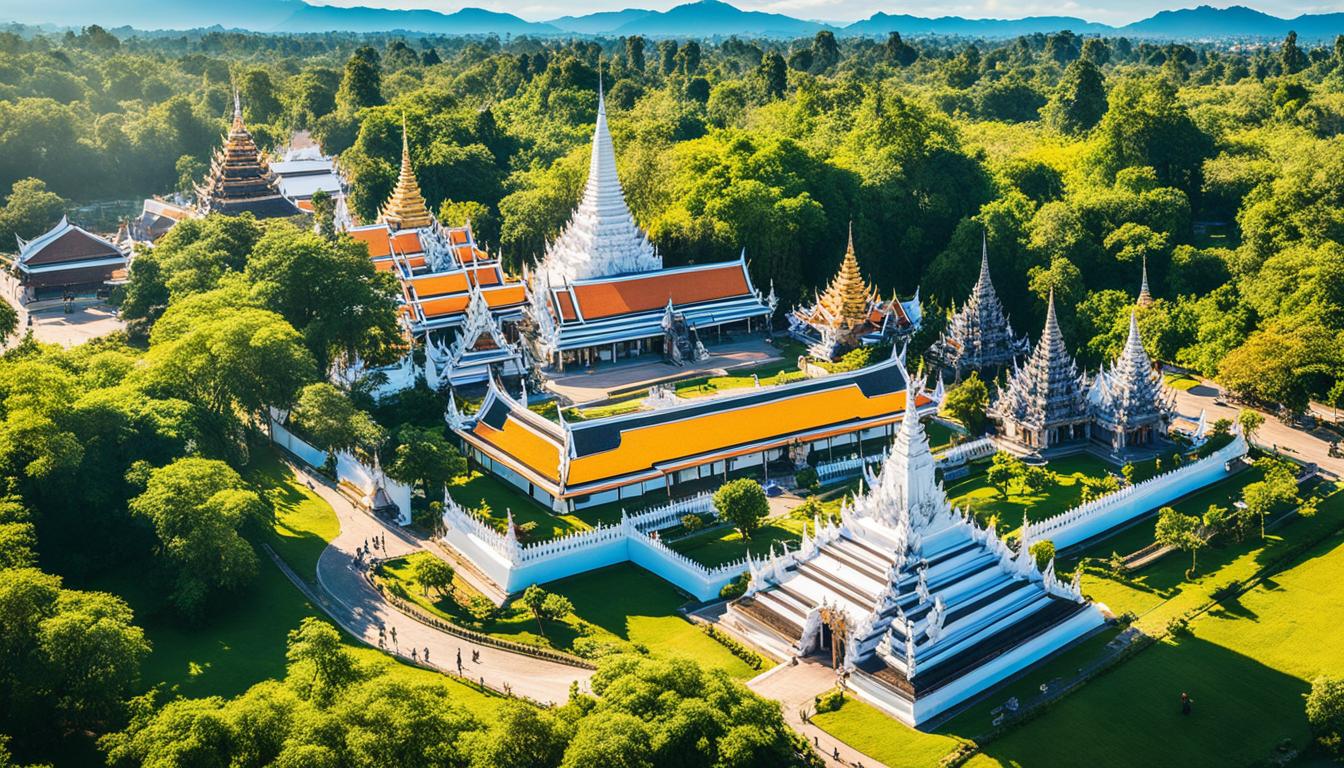

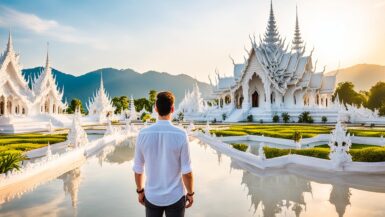
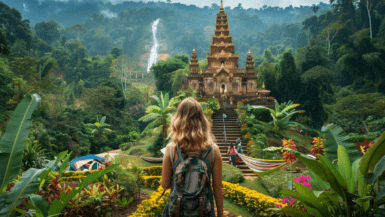
Leave a reply